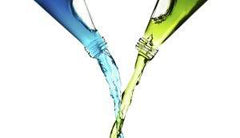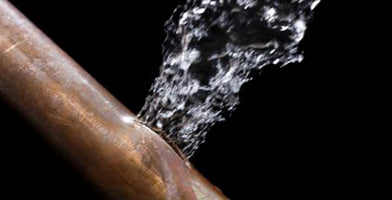Why Glycol is Used in Heat Transfer Systems?
An irregularity exists within the properties of water and ice. It turns out, at 39.16 degrees Fahrenheit, water reaches its greatest density, even greater than the density of its solid form, ice. Consequentially, this causes an issue when it comes to utilizing water to carry heat or cooling around our buildings to provide temperature control and comfort to building occupants.
For example, how do we protect the piping and other equipment in a hydronic heating system from bursting in the event the heat generators are down and the water in the system approaches freezing temperatures?
Answer: We lower the freezing point of the water in our system by adding in a specific amount of glycol.
Types of Glycol
In the hydronics world, two types of glycol are used: propylene glycol and ethylene glycol. What is the difference between the two?
There are two main factors to consider; first, ethylene glycol is a more toxic substance than propylene glycol and it can be harmful if ingested. In heating systems where there is potential exposure to the system fluid or there are chances of the glycol contaminating potable water, we avoid its use. Only in strictly regulated industrial environments do we see ethylene glycol being used in today’s world.
Propylene glycol, on the other hand, has been approved as safe by the FDA. Because of the low oral toxicity, it is commonly used in packaged foods, drugs, and cosmetic products.

So why not use propylene glycol every time? The answer is: Heat Transfer.
It turns out that the lower freezing point advantages we gain from glycol come at a cost, and that cost is poorer ability to transfer heat. The often-used equation in the world of hydronics to compute total heat transfer from the flow rate at which the water is traveling and the temperature delta we plan for across our coils is often expressed as:
BTUH = GPM * dT * 500
What is frequently left out is the fact that this equation only represents the total heat transfer when our fluid is pure water. Once we introduce glycol, we must take into account the significant difference in the specific heat of the glycol mixture as compared to pure water.
For instance, propylene glycol at a 40% concentrated mix with water produces a specific heat of 0.895. That drop ultimately reduces the total amount of heat transfer we are able to achieve with identical flow rates and temperature deltas as compared to 100% water.
However, ethylene glycol solutions do not impact specific heat as much as propylene glycol solutions, and therefore provide better heat transfer at the same mixture percentage (glycol concentration).
Below is the adjusted formula for total heat transfer taking into consideration that the solution is not made from pure water, but instead includes glycol:
BTUH = GPM * dT * 500 * Specific Heat * Specific Gravity
Freezing and Bursting
This might sound confusing, but these are two different things when we talk hydronics. Freeze protection refers to the total elimination of a phase change occurring to solid form at a specified temperature; in this scenario, the fluid in the system will always stay in liquid form all the way down to the worst case temperature scenario determined by the design team.
Compare that to burst protection which allows part of the fluid in the system to achieve a phase change and create a slush like consistency in the piping, but prevents total freezing from occurring which would ultimately burst the pipes.
If a system containing glycol does in fact spring a leak, the coloring dye added to the solution during the manufacturing process helps to identify the location of the leak.
What Concentration Do You Need?
Concentration will depend on the type of glycol used, the lowest anticipated ambient temperature and whether you desire freeze protection or burst protection. Click here to learn more about calculating required glycol concentration or contact us today!









